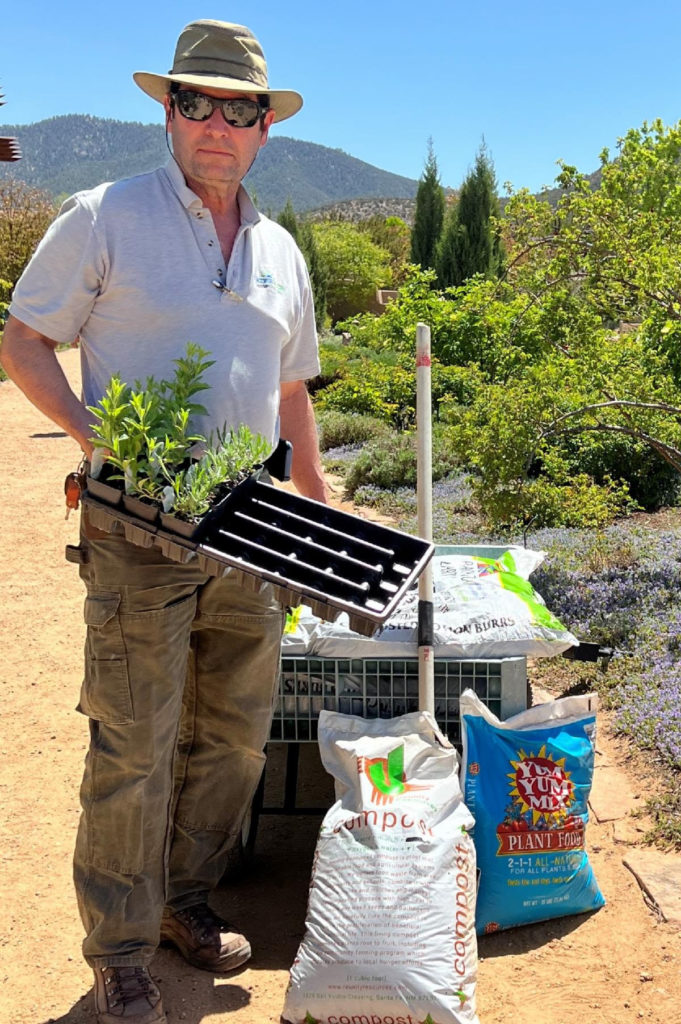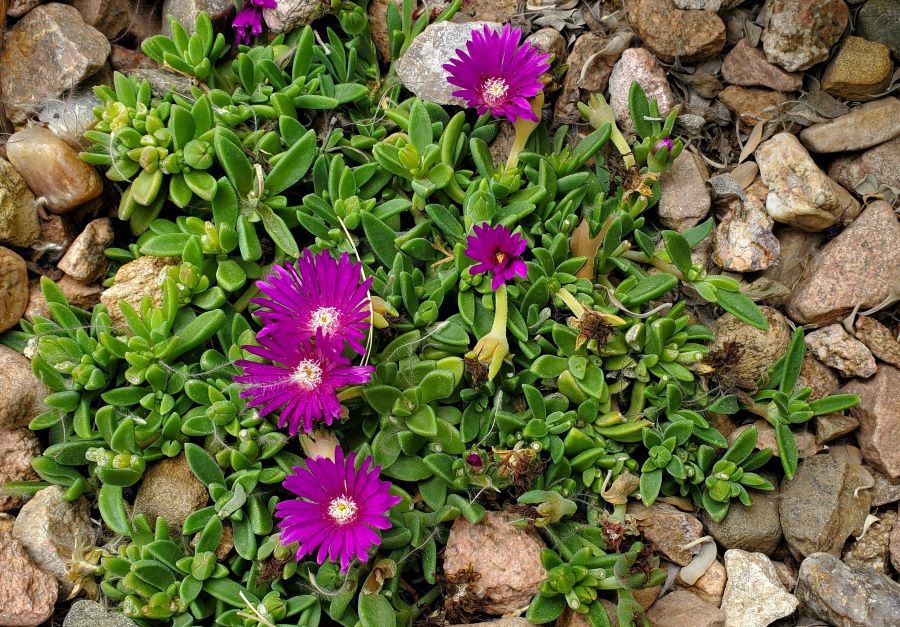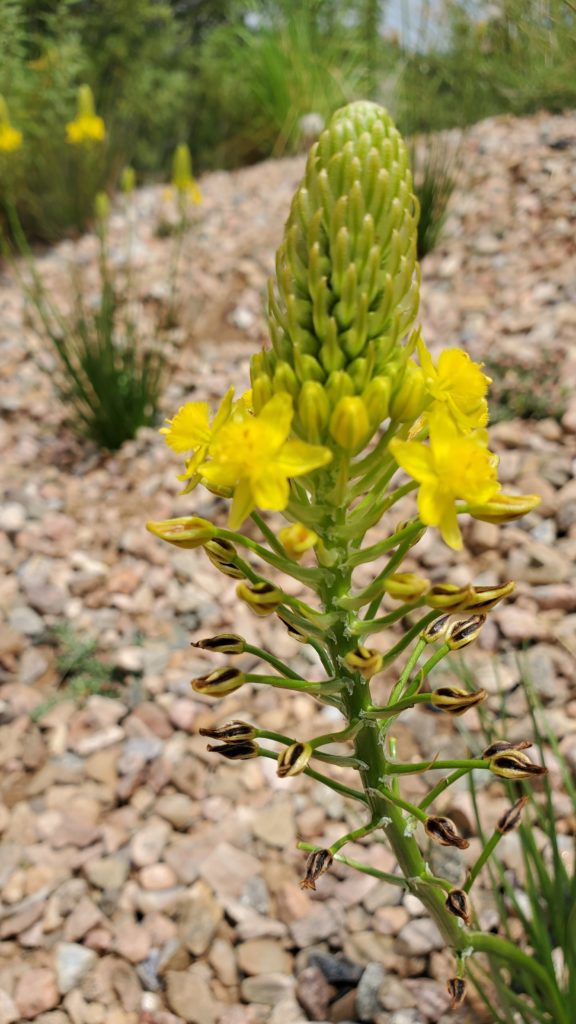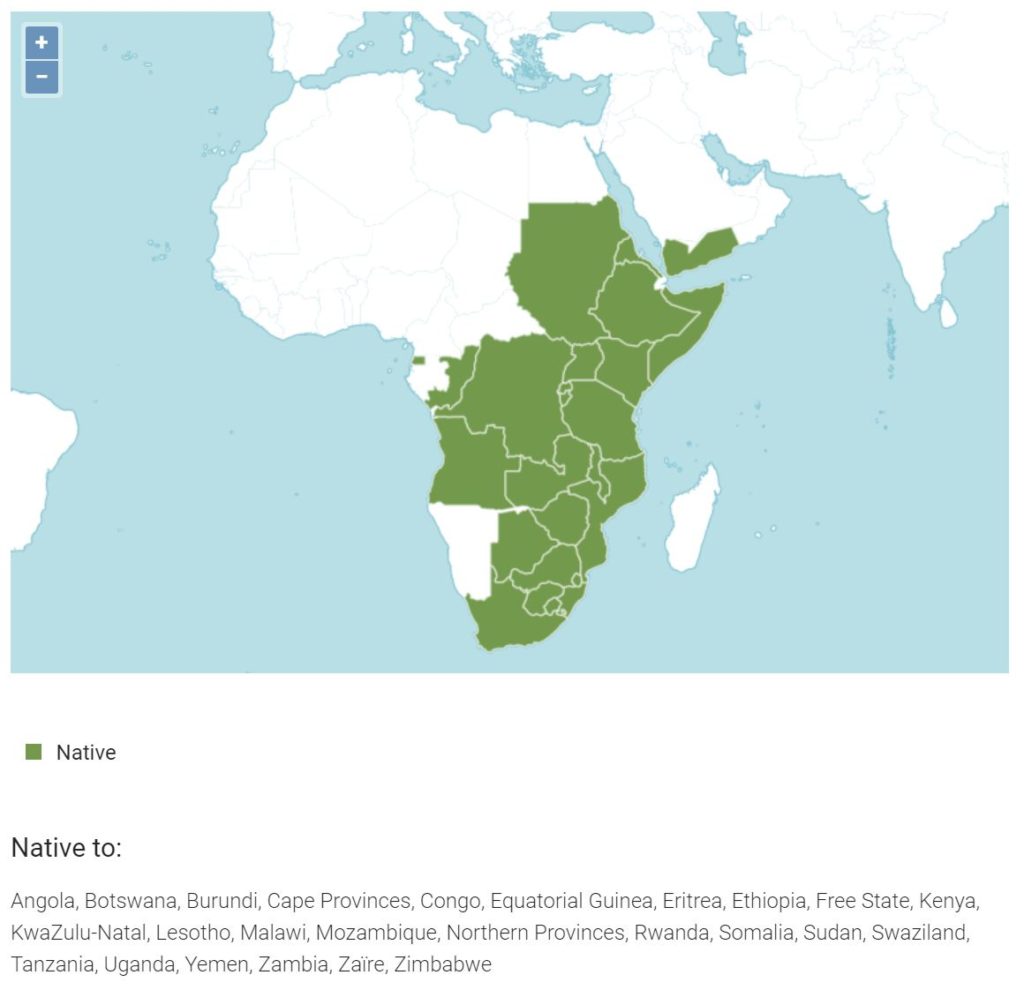July 2023
With the arrival of hot, windy summer weather in northern New Mexico, we begin to appreciate succulents and other heat-loving plants, both those from our own region and those from further afield that are adapted to our climate and conditions.

Our late friend and supporter David Salman was instrumental in introducing many interesting and beautiful succulents and other plants to cultivation and, through his passionate advocacy and love of plants, to many gardeners in the western U.S.
When we asked David to help us augment the SFBG plant collection in 2022, he generously offered not only his advice and expertise, but also plants from his collection as well as his time to install them.
Three fascinating species that David planted for us, all with South African roots, started blooming recently in our garden, adding bright hits of color to our Xeric garden.
Description: This ice plant forms a mat 15-18” wide, seldom growing more than 1” high. The evergreen hairy leaves are flattened and three-sided. Intensely magenta colored flowers with many narrow petals bloom in summer and early fall. Flower color intensifies with more sun exposure. The roots are tuberous. Ice plants are considered good for nonflammable groundcovers due to the moisture content in the leaves, but cannot tolerate foot traffic. This cultivar was discovered in horticulturist Kelly Grummons in his gravel driveway in Colorado.
Growing conditions: Prefers to grow in full sun in well-drained soils. It prefers moderate watering in dry summers, but tolerates dry soil. Too much water, particularly in winter, can cause die-back. Gravel mulch is preferable to bark mulch.

Photo by Linda Churchill
Description: This South African ground cover grows to 3-4” in height with a spread of about one foot. Blue-green triangular leaves are held on slender woody stems. Plants flower in mid-spring to early summer with 1” diameter magenta-purple flowers. Flowers are made up of many slender petals with pale centers. Plants may be short-lived but are easily propagated from cuttings.
Growing Conditions: Grows best in full sun and well-drained soils. Plants are drought-tolerant once established. Requires dry conditions in winter. Prefers gravel mulch to bark mulch. Plants are very cold tolerant and rabbit resistant.
 Description: This perennial herbaceous plant has slender, succulent grass-like leaves. In late spring through summer, tall 18-24” spikes of bright yellow flowers bloom with blooms opening sequentially. Each flower has six petals with bearded stamens. Plants are self-incompatible, meaning that no seeds will be produced unless more than one clone is present.
Description: This perennial herbaceous plant has slender, succulent grass-like leaves. In late spring through summer, tall 18-24” spikes of bright yellow flowers bloom with blooms opening sequentially. Each flower has six petals with bearded stamens. Plants are self-incompatible, meaning that no seeds will be produced unless more than one clone is present.
Growing Conditions: Can be grown in full sun to part shade in well-drained soils. Prefers humus-rich soils. Tolerates drought but may bloom more with moderate summer moisture. Clumps can be divided in early spring.
Habitat: Grows in rocky grassland and shallow soil overlying rock, as well as in woodland and along seepage areas. It frequently forms small colonies. (http://pza.sanbi.org/bulbine-abyssinica)
Range: eastern Africa from South Africa to Ethiopia



